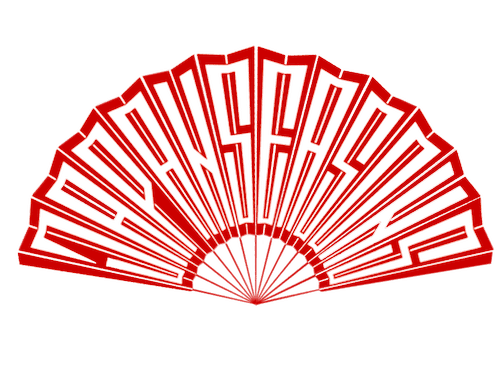Tokyo in Japanese means the Eastern Capital. This name was given to the samurai city of Edo after the capital was moved here from Kyoto in the second half of the 19th century. The largest city in Japan never ceases to amaze travelers with its cleanliness, convenient transportation, and friendliness of the locals who are ready to overcome language barriers and help their foreign guests. Tokyo attracts everybody interested in modern Japan: fans of contemporary architecture and street fashion, video games, and unusual cafes.
- Tours
- Gion Festival and Modern Art
July 12 - 24, 2025 “Gion Festival and Modern Art”

GROUP TOUR ON FIXED DATE
- On request
Dates
- 12 — 24 July 2025
Duration
- 13 days / 12 nights
Price
- On request
Itinerary
- Tokyo → Kamakura → Kyoto → Nara → Osaka → Himeji-Hiroshima → Miyajima-Iwakuni → Kurashiki-Ritsurin → Naoshima → Tokyo
Daily itinerary
July 12, 2025 (SAT)
Self-transfer to the hotel in Tokyo (transfer instructions will be provided in advance)
Hotel check-in
Meeting with the tour guide in the hotel lobby
Evening walking tour "Introduction to Tokyo"
Evening walk through Tokyo, getting acquainted with the modern capital: the historic and business districts of Nihonbashi and Marunouchi, a stroll down Ginza Street known for its luxury boutiques, cafes, restaurants, and elegant atmosphere
Return to the hotel

Tokyo
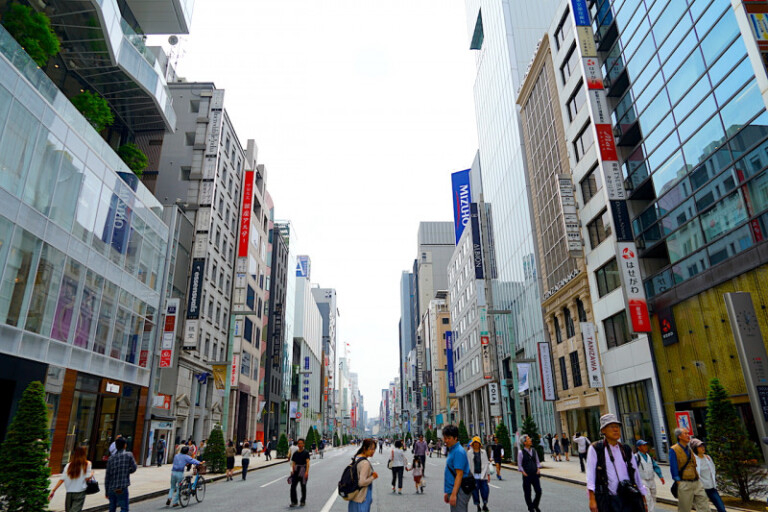
Ginza District
Ginza is Tokyo’s most luxurious shopping district, home to prestigious department stores, world-famous designer boutiques, coffee shops, and traditional Japanese restaurants. People come here to learn about the latest high fashion trends and enjoy the creations of the best architects worldwide.
At the same time, Ginza is an art lover’s paradise. There are about 200 art galleries and Kabukiza Theater, which still regularly hosts Kabuki theater performances.
July 13, 2025 (SUN)
Meeting with the tour guide in the hotel lobby
Tokyo city tour: Historic district of Asakusa, which still retains the charm and atmosphere of the old city, Sensoji Temple - the oldest Buddhist temple in Tokyo, Kaminarimon (Thunder Gate) with its giant lantern, the world-famous Shibuya Crossing, and the statue of the loyal dog Hachiko
Calligraphy workshop, introduction to Japanese writing
Return to the hotel
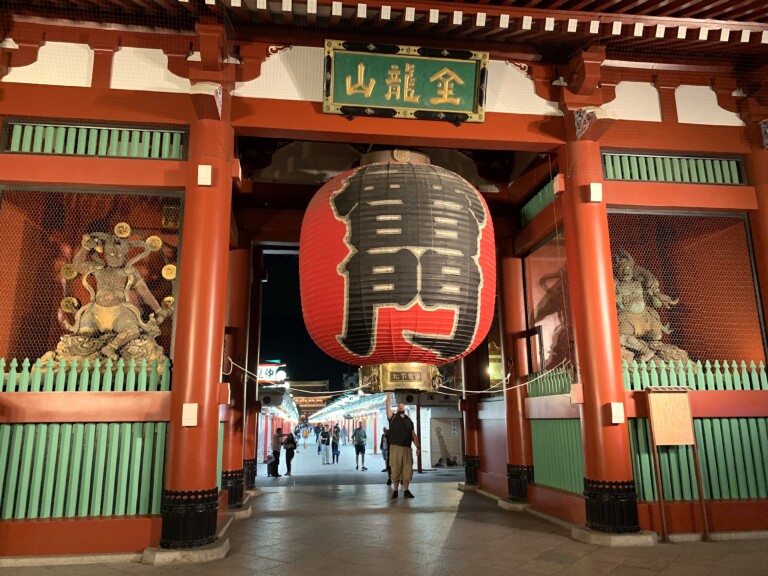
Sensoji Temple
Sensoji Temple, located in Tokyo’s historic Asakusa district, is one of the city’s most revered and iconic landmarks. Believed to have been founded in the 7th century, the temple is dedicated to the Bodhisattva Kannon, the Goddess of Mercy. As you approach the temple, you pass through the vibrant Kaminarimon Gate, adorned with a massive red lantern. A bustling market street called Nakamise-dori leads you to the temple’s main hall, where visitors can admire the intricate architecture and serene atmosphere. Sensoji Temple is not only a religious site but also a cultural treasure, offering a glimpse into Tokyo’s rich history and spiritual heritage.
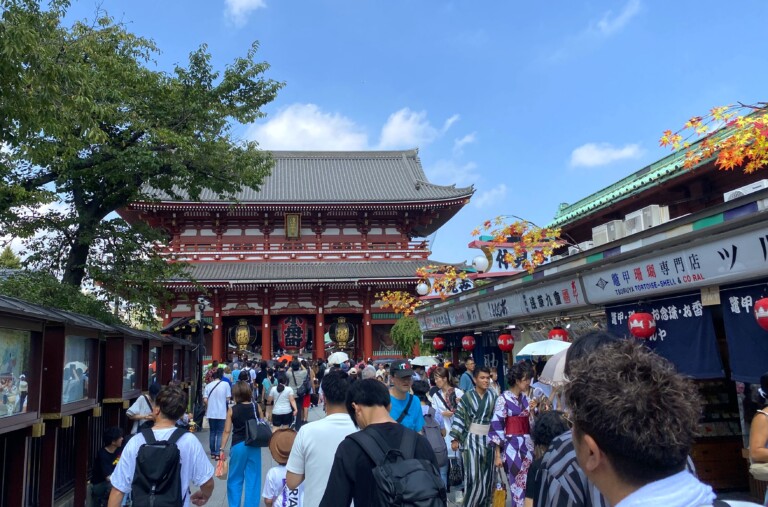
Nakamise Street
Nakamise Street is a historic shopping street in the Asakusa district, believed to be several centuries old. Stretching 250 meters, the street is densely lined with small shops on both sides, selling traditional sweets and souvenirs, and leading from the “Thunder Gate” Kaminarimon to the main grounds of the Sensoji Buddhist Temple. Here, you can watch the baking of Tokyo’s traditional ningyo-yaki sweets, try crispy traditional crackers, and experience the vibrant and lively atmosphere of Japan’s usually serene capital.
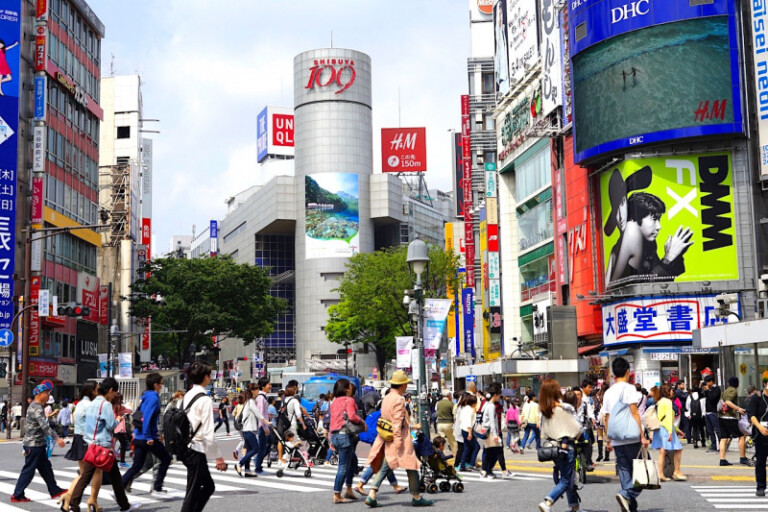
Shibuya Area
Shibuya scramble crossing is one of the busiest crossings in Tokyo. The green light comes on from four directions at once, and several hundred people (during peak hours, the number can reach 1,000) rush simultaneously in all directions, managing to dodge each other with ease built up over the years.
For its picturesque yet orderly crowds, the crossing is beloved by filmmakers, and people worldwide are familiar with it from TV series, movies, and commercial videos. The best spot to watch the hypnotic flow of people is the Starbucks coffee shop on the 2nd floor of the building on the north side of the crossing.
There is also a statue of the faithful dog Hachiko near Shibuya Station, where he used to meet his master, a professor at Tokyo University, every day. After the professor’s sudden death, the dog came to the station every day for nine years, waiting for his master to return. Hachiko became the symbol of loyalty.
July 14, 2025 (MON)
Meeting with the tour guide in the hotel lobby
Kamakura Sightseeing: outdoor Great Buddha statue, ancient Buddhist temple Hasedera, shrine where believers wash money - Zeniarai Benten
Transfer to Kyoto on the high-speed Shinkansen train
Meeting with the tour guide on the platform
Hotel check-in
July 15, 2025 (TUE)
Kyoto Sightseeing tour "Gold and Zen of Kyoto"
Japanese gardens and temples of Kyoto: the iconic Golden Pavilion Kinkaku-ji and its unique landscape garden, Ryoan-ji Temple and its famous Rock Garden
Central historical districts of the Old Capital, Yasaka Shrine, and the Gion district, exploring the culture and quarters of geishas, Teramachi Street, Kyoto cuisine at Nishiki Market
Evening stroll "Yoi-yoi-yama" of the Gion Matsuri festival on the streets of Kyoto. The central streets, closed to traffic this evening, will provide access to the festival procession floats, along with rows of food and souvenir stands. Here you will immerse yourself in the atmosphere of a true Japanese folk festival with its traditional music and entertainments.
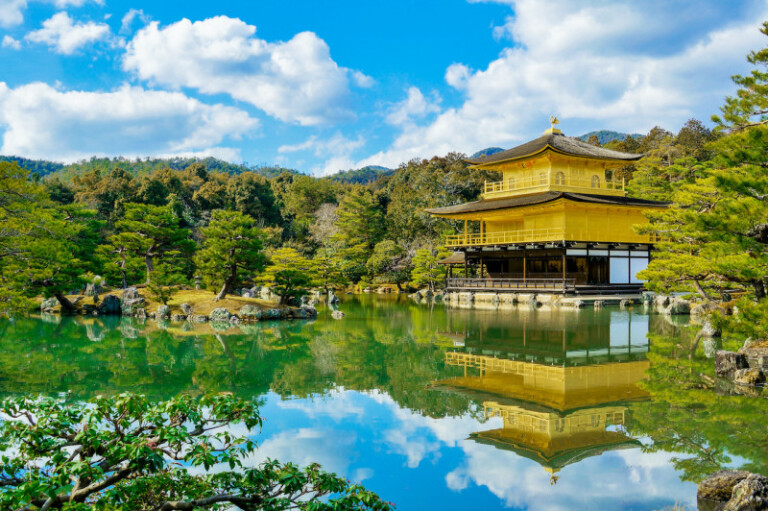
Kinkaku-ji (Golden Pavilion)
Kinkaku-ji Temple, often called the Golden Temple, is one of Japan’s most famous temples and Kyoto’s main attractions. Built at the end of the 14th century, this complex, with its three-story pavilion covered with gold leaf, captivated the minds of its contemporaries. The famous Japanese writer Yukio Mishima captured its fate and glory in the novel “The Golden Temple.” Today Kinkaku-ji Temple is a must-see on any traveler’s itinerary in Japan. In addition to the famous pavilion, the UNESCO World Heritage Site also features a traditional walking garden, small waterfalls, and a tea house, representing the culture of the samurai era.
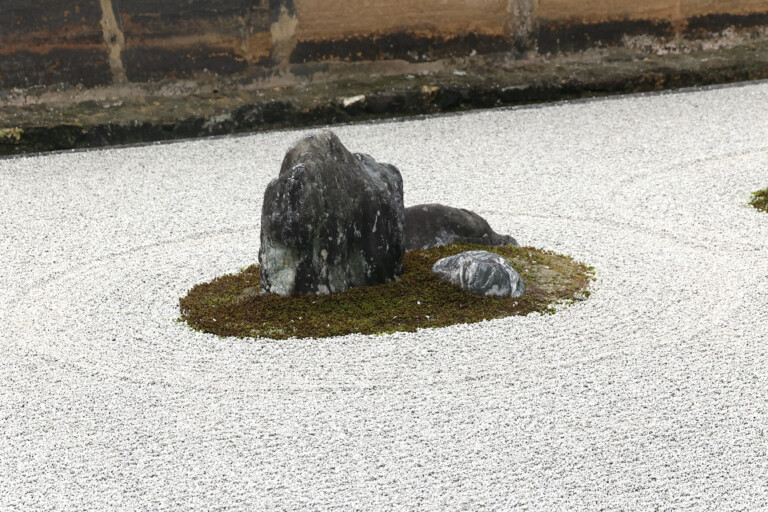
Ryoan-ji Temple
Ryōan-ji Temple, located in northern Kyoto, was founded in the mid-15th century. The famous rock garden was also established at the same time. The garden is now considered one of the best in Japan and is protected as a UNESCO World Heritage Site.
For centuries, the Ryōan-ji Temple garden has attracted visitors trying to solve its mystery: why can you see only 14 of the 15 stones? And what does the composition of sand and rocks represent?
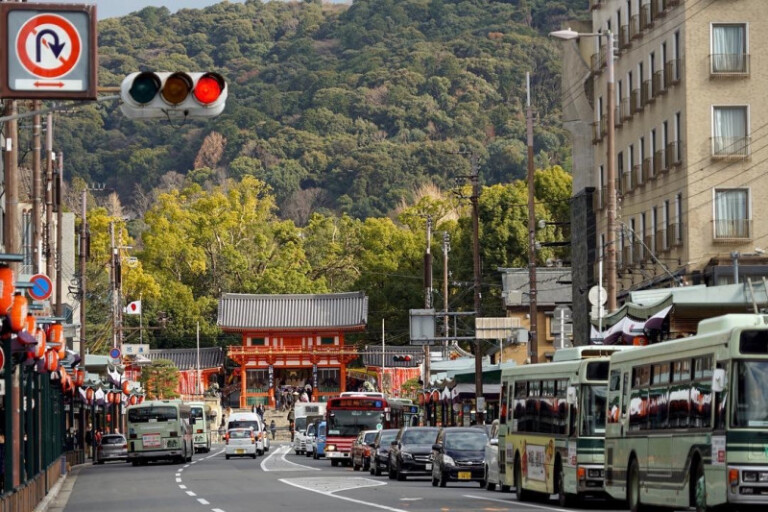
Yasaka-jinja Shrine
According to the legend, Yasaka-jinja Shrine was founded in 656 (almost a century and a half before Kyoto) and has long been loved by the citizens. When epidemics ravaged the country in 869, the emperor ordered a grand procession to the temple, and the deity Gozu Tenno stopped the disease. It was the beginning of Japan’s oldest and most colorful festival, Gion Matsuri. In Yasaka-jinja, you can pray to deities of family, beauty, and wealth and stroll through Maruyama Park to enjoy live music and see the rickshaws running around.
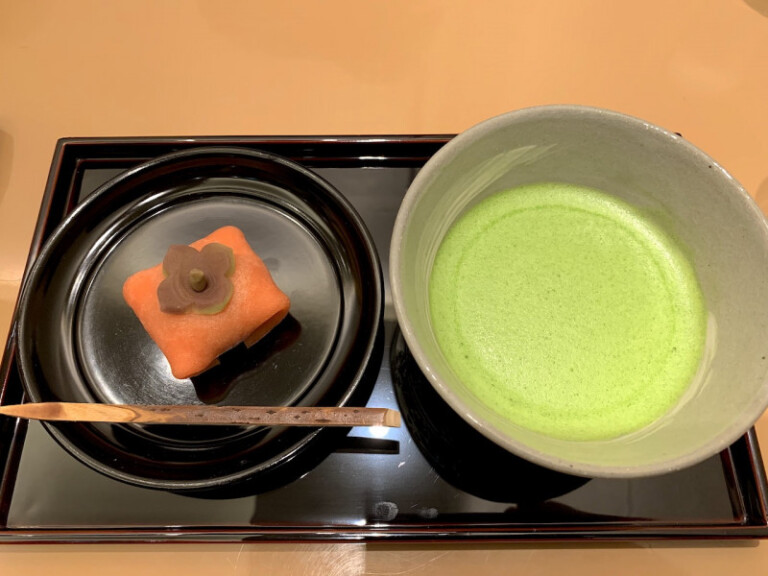
Teramachi Street
Teramachi Street is one of the most interesting historical streets in Kyoto. A thousand years ago, this area was home to the fashionable residences of those close to the emperor’s court. During the Middle Ages civil wars, this part of the city was almost destroyed. The mighty Toyotomi Hideyoshi renovated the war-torn capital and gathered Buddhist temples on this street, around which a shopping and artisan district eventually formed. Today, Teramachi Street features old temples, traditional and modern stores, and a variety of restaurants.
July 16, 2025 (WED)
Meeting with the tour guide in the hotel lobby
Kyoto Tour "Samurais of the Old Capital": meditation in a Zen Buddhist temple, conversation with a monk, and appreciation of the Zen garden
Temple of a thousand Bodhisattvas Sanjusangendo, Toyotomi Hideyoshi Shrine, Nijo Castle with its "nightingale floors" and strolling garden
Optional: visit to a 250-year-old samurai house, Samurai experience
Evening stroll "Yoi-yama" of the Gion Matsuri festival on the streets of Kyoto
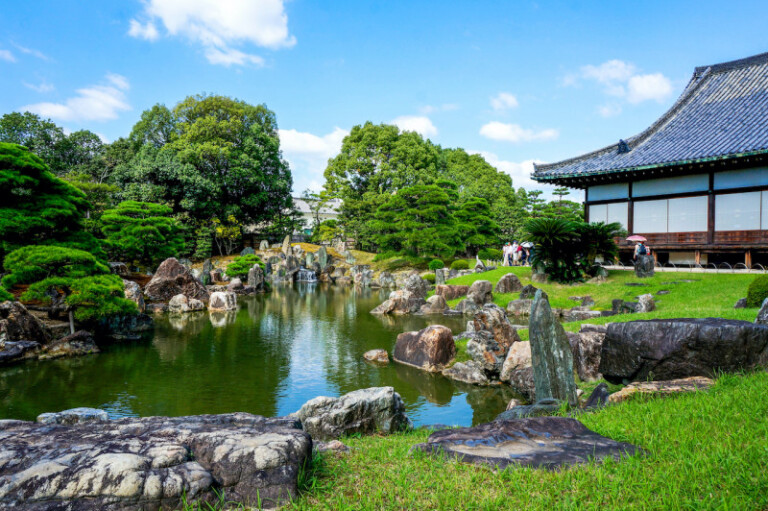
Nijo Castle (Nijo-jo)
Nijo Castle is a UNESCO World Heritage Site in Kyoto, built in the early 17th century for the powerful shogun Tokugawa Ieyasu. During his visits to the imperial capital, the shogun stayed in the castle with several ornate palaces and a beautiful garden. One of the complex’s palaces, Ninomaru, has survived to this day. The palace’s interior is painted by famous artists of the Kano school and is richly decorated with wood carvings and gold. Tokugawa Ieyasu himself admired the garden created by Kobori Enshu, the great master of the tea ceremony and landscape design.
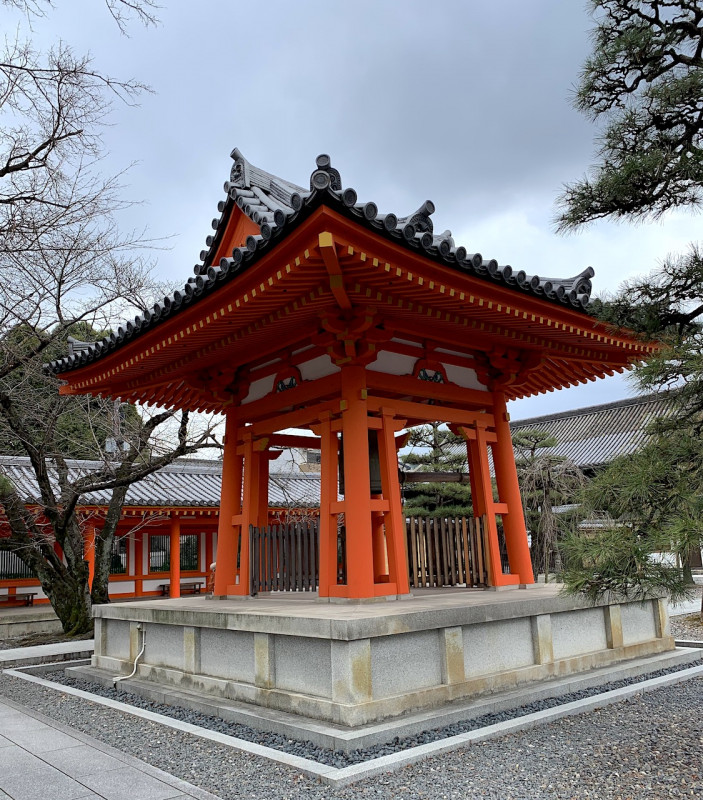
Sanjusangen-do Temple
Sanjusangen-do is the unofficial name for Rengeoin Temple in western Kyoto. The temple was built in the mid-12th century and is primarily known for the statues of the thousand-armed bodhisattva of mercy Kannon, which line the complex’s main hall. There are 1,001 statues of Kannon in Sanjusangen-do, surrounded by statues of the heavenly guardians, and two famous sculptures of the gods of Wind and Thunder. To accommodate so many human-sized statues, the longest wooden building in Japan was built: the complex’s main hall is 120 meters and 33 (sanjusan) bays long, hence its name “The Temple of Thirty-Three Bays.”
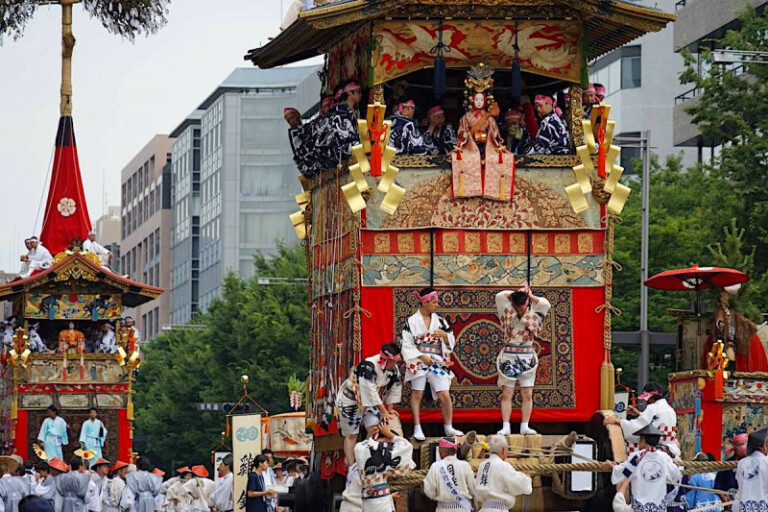
The Yoiyama period of Gion Matsuri (Gion Festival)
The Yoiyoiyama and Yoiyama evening festivities preceding the yamaboko parade are an opportunity for the residents of the areas responsible for building the floats to rest after their work. The other citizens can relax, enjoy the cool of the night, and see up close the decorations of the magnificent floats that have guarded the Old Capital for centuries.
On the main streets that are closed to traffic, the festival floats are accessible this evening, and there are rows of stands selling food and souvenirs. Here you can immerse yourself in the atmosphere of an authentic Japanese festival with its traditional music and entertainment.
July 17, 2025 (THU)
Meeting with the tour guide in the hotel lobby
Watching the Gion Matsuri festival in Kyoto
Today we will visit one of the most colorful festivals in Kyoto! Once a year, you can see a parade of graceful floats with your own eyes and learn more about the traditions and ancient culture of the locals.
Evening mysteries of the Gion Matsuri festival, when portable shrines "mikoshi" with the three deities of Yasaka Shrine will be carried through the city.
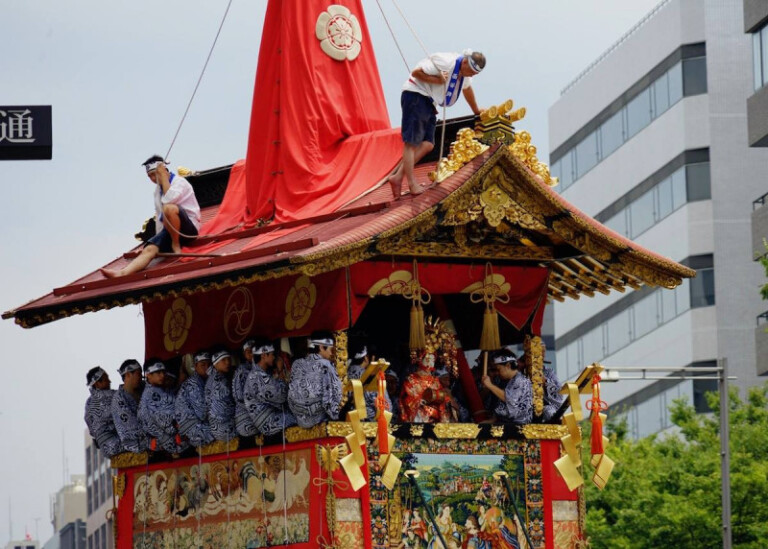
Gion Matsuri (Gion Festival)
Gion Festival is one of Japan’s three major holidays and Kyoto’s main festival. The accompanying celebrations stretch throughout July, but the festival peaks on July 17 when a parade of giant floats decorated with ancient treasures goes through the city.
